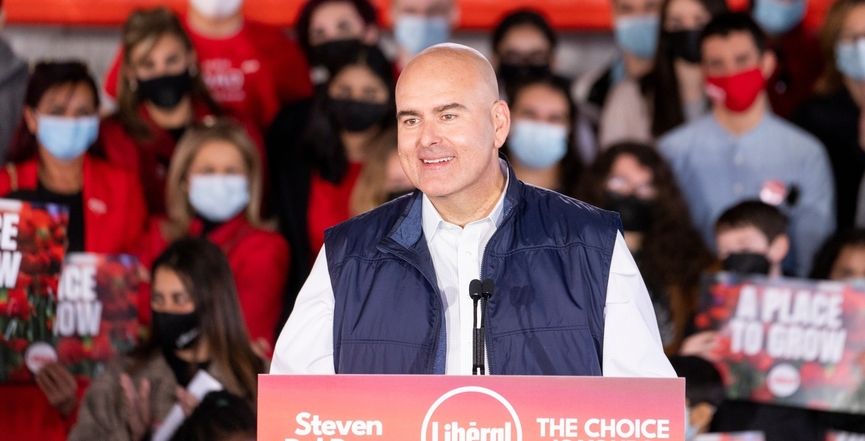On April 28, Ontario Liberal Party Leader Steven Del Duca tweeted that if he wins the upcoming provincial election, his party will end for-profit long-term care and expand access to home care for 400,000 seniors.
The Liberals will do this by not renewing the licenses of for-profit operators and by “negotiating and financing the transfer of existing homes” to the control of municipal and not-for-profit operators. The Liberals promise this will be done by 2028.
This is a bold promise that, the Liberals say, is necessary considering the state of private, for-profit facilities in Ontario during the COVID-19 pandemic. They specifically cite the fact that the Canadian Armed Forces (CAF) were called in to help manage horrific conditions during the first wave at facilities in Ontario and Quebec.
A 2020 report from the CAF described depraved and horrifying conditions at five facilities in Ontario: Eatonville Care Centre, owned by for-profit operator Rykka Care Centres and where 42 people died; Hawthorne Place Care Centre, also owned by Rykka and where 51 people died; Altamont Care Community, owned by for-profit operator Vigour General Partner Inc. (Sienna Senior Living) and where 54 people died; Orchard Villa, owned by for-profit operator Southbridge Health Care LP and where 77 people died (in the long-term care unit and retirement residences combined); and Holland Christian Homes, a not-for-profit facility where 29 people died.
These were not the only facilities in Ontario that had high numbers of deaths. Of the 12 facilities where 50 or more people died from a COVID-19 outbreak, all but one were owned by for-profit operators.
Ontario has the third-lowest proportion of publicly owned long-term care facilities among Canadian provinces. Of the 627 facilities that operate in the province, just 16 per cent are publicly owned.
Only New Brunswick and Nova Scotia have less public ownership, at 14 per cent each.
Ontario has the highest total number of for-profit operators. Some public and not-for-profit facilities outsource day-to-day management responsibilities to for-profit chains, blurring the lines between each category even further.
For the Liberals to be able to phase out for-profit long-term care, they would need to convince and enable 43 per cent of the system’s operators to absorb the other 57 per cent.
That will be difficult, considering that most not-for-profit and municipal operators only run a few facilities at a time, unlike large for-profit chains like Chartwell, Extendicare, Rykka, Schlegel, Southbridge and Revera, which all operate dozens of facilities across the province.
Asked how the Ontario Liberals plan to convince not-for-profit and municipal providers to take on so many facilities in such a short period of time, a party spokesperson offered few details.
"We will provide capital, operating and governance support to municipalities and local partners who want to build long-term care homes, with an emphasis on smaller spaces," the spokesperson said in a statement to The Maple. "And we will work closely with these partners to ensure the new spaces are spread strategically across the province."
The task will be made even more difficult by the fact that the Progressive Conservative government has continued to expand the reach of for-profit operators into the sector.
On March 11, the PCs committed to building or upgrading more than 2,000 long-term care beds at eight facilities operated by for-profit companies Extendicare, Revera, Southbridge, Sienna Senior Living and Norwood Nursing Home Ltd in Toronto as part of a $6.4 billion plan to build or upgrade nearly 60,000 beds by 2028.
On April 21, the PC government announced allocations for another 18 projects, mostly promised to for-profit providers, to build more capacity. A total of 365 projects have been announced to date.
Undoing these commitments is no small task and taking on the for-profit system more broadly will require strong political will.
Mustering that will might be difficult for a Liberal government, since the problems with long-term care did not begin under Doug Ford or during the pandemic.
During his 10-year tenure, Liberal premier Dalton McGuinty promised to tackle long-term care reform, but broke two significant promises while in office. First, he didn’t reverse the PC’s competitive bidding system for new facilities, which favoured expansion by for-profit operators.
Second, McGuinty's government allowed the gap between the number of patients and hours of care to grow. Staffing levels have not kept up with the number of residents and this was a key reason why long-term care facilities were so deadly during the pandemic.
Another issue is that while the Liberals have fewer direct connections with the long-term care industry than Ford’s Conservatives (Liberals will be quick to point out that Chartwell is chaired by former PC premier Mike Harris), they have their own connections with the industry too.
As reported by Rank and File in 2020, nearly a dozen former Liberal insiders were employed as lobbyists for long-term care corporations or the Ontario Long-Term Care Association, the for-profit sector’s leading advocacy group.
The NDP wants to end for-profit care too, pledging to make all long-term care “public and not-for-profit.”
The sum total of the Progressive Conservatives’ long-term care election campaign pledges are “allowing more seniors to stay in their own homes,” with no further explanation.
The institutionalization of long-term care is deep-rooted and any government that hopes to tackle it will need to be committed to upending the status quo. In Quebec, the province that bore the brunt of Canada’s COVID-19 deaths, 88 per cent of long-term care facilities are publicly owned.
Even still, their system is plagued by many of the same problems seen in Ontario. The Liberals will have to contend with problems within not-for-profit and public delivery too if they hope to see improved outcomes by placing control of all long-term care within these two types of facility.
Nora Loreto is The Maple's Ontario election reporter. She is the author of Spin Doctors: How Media and Politicians Misdiagnosed the COVID-19 Pandemic.







